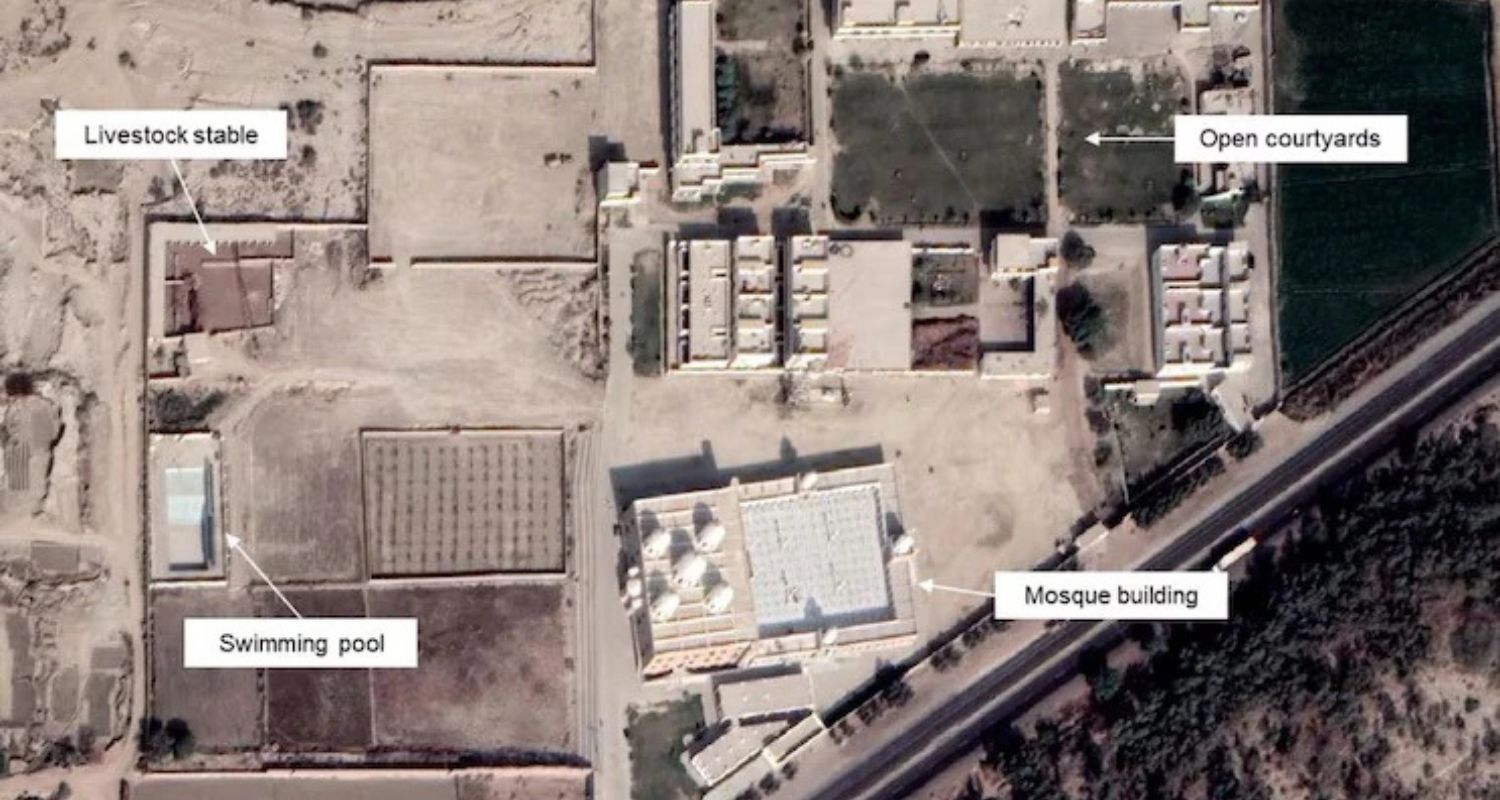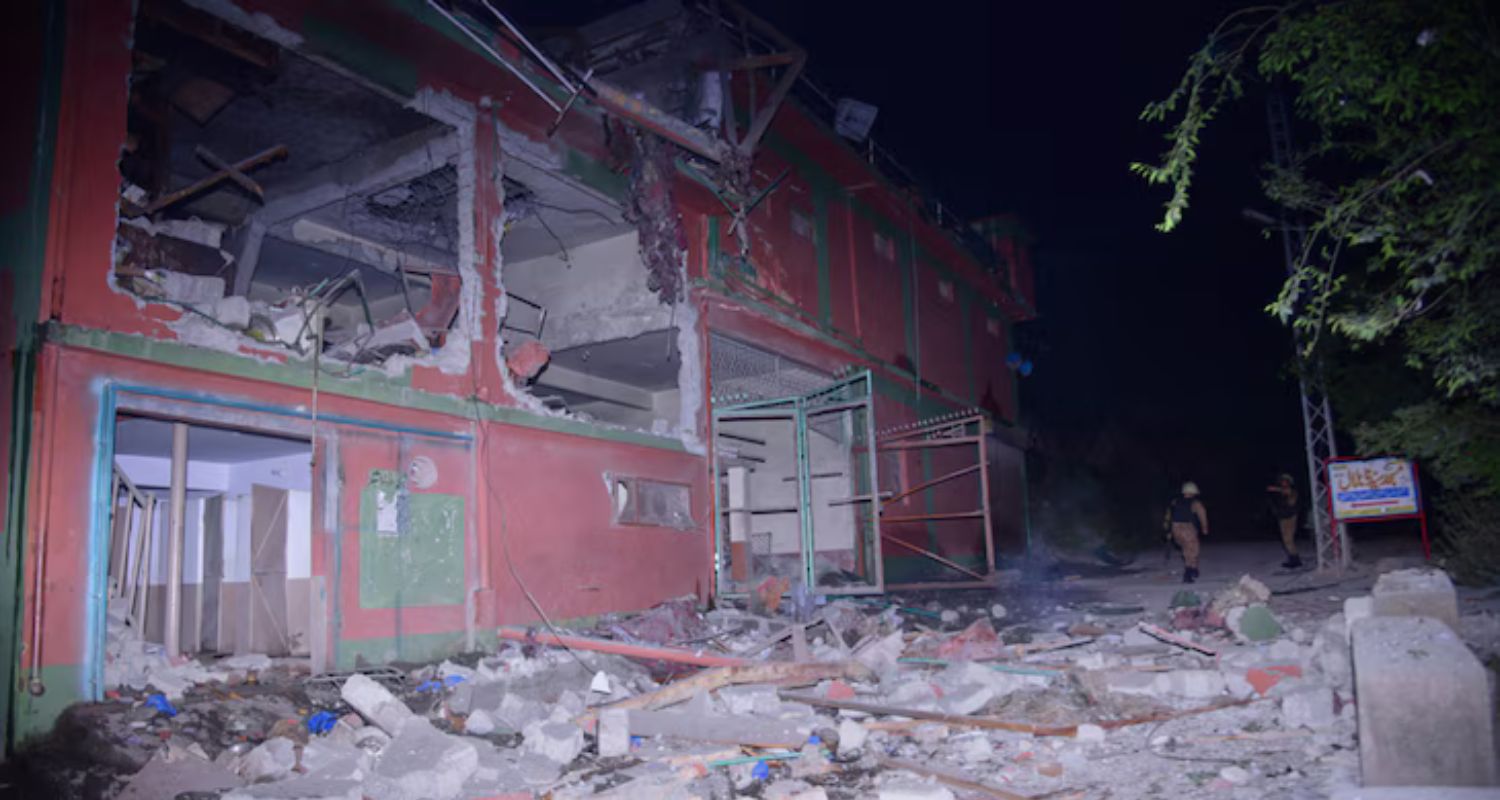Trending:
Why was Bahawalpur hit? Its link to Masood Azhar and Jaish
The primary targets of Operation Sindoor were the jihadist facilities of Jaish-e-Mohammed and Lashkar-e-Taiba, two terror groups implicated in several significant attacks across India.News Arena Network - New Delhi - UPDATED: May 7, 2025, 06:04 AM - 2 min read

Jaish-e-Mohammed chief Masood Azhar.
The Indian Armed Forces carried out overnight strikes on terror bases in Pakistan, targeting key locations in Kotli, Muridke, and Bahawalpur. Pakistan confirmed the attacks on nine sites in these areas.
Known as Operation Sindoor, the primary objective of the strikes was to dismantle the jihadist infrastructure of Jaish-e-Mohammed (JeM) and Lashkar-e-Taiba, two terrorist groups that have been responsible for several major attacks on Indian soil over the past three decades.
WHY BAHAWALPUR?
Bahawalpur, the 12th largest city in Pakistan, serves as the operational hub for the Jaish-e-Mohammed (JeM), one of the most notorious militant organisations active in the region. Located approximately 400 km from Lahore, Bahawalpur hosts the group's primary base of operations at the Jamia Masjid Subhan Allah complex, also known as the Usman-o-Ali campus.
The Jamia Masjid Subhan Allah, a sprawling campus that spans over 18 acres, was one of the key sites targeted by Indian forces during Operation Sindoor. This complex is not just a religious site but also serves as the central location for JeM’s recruitment, fundraising, and indoctrination activities. The campus has long been a strategic asset for the organization, aiding in its operations and ideological influence.
Bahawalpur holds further significance as the birthplace and residence of Maulana Masood Azhar, the founder of JeM. Azhar, who has been a key figure in orchestrating multiple high-profile attacks on Indian soil, resides in a heavily-guarded complex in the city. His presence in Bahawalpur underscores the city’s deep-rooted connection to JeM's operations and the personal ties of its leadership to the region.
Despite being officially banned in 2002, the JeM has continued to operate freely in Bahawalpur and other parts of Pakistan, with the government's actions against the group largely symbolic. The ban was never fully enforced, and the organization has maintained its full operational capabilities, running training camps and recruitment activities without significant interference.
Interestingly, the JeM camp in Bahawalpur is located just a few miles from a military cantonment, which serves as the headquarters for Pakistan's 31 Corps. This proximity has led to speculations that the Inter-Services Intelligence (ISI), Pakistan's intelligence agency, may be offering support and protection to JeM. This has further fueled accusations that the Pakistani military establishment is complicit in harboring and facilitating militant groups.
Additionally, Bahawalpur is rumored to host a secret nuclear facility, adding another layer of strategic importance to the region. The presence of such a facility, coupled with the city’s proximity to key military assets, underscores its central role in Pakistan's defense and militant infrastructure.
The combination of Maulana Masood Azhar's residence, the JeM operational base, and the city’s military connections points to a complex web of support, protection, and strategic interest, making Bahawalpur a significant focal point in the ongoing geopolitical tensions in the region.

Jamia Masjid Subhan Allah: Jamia Masjid Subhan Allah, a mosque camouflaged as a seminary, is a key facility linked to Jaish-e-Mohammed (JeM). Funded by the Al-Rahmat Trust, a front organization for JeM, the mosque was initially a simple structure but underwent significant expansion. By 2011, it had transformed into a large complex with advanced training facilities, completing its development by 2012.
Satellite imagery of Bahawalpur reveals an 18-acre facility, characterized by intermittent construction and expansion. The complex houses a grand central mosque, a madrassa that accommodates over 600 students (trainees), as well as a swimming pool, horse stables, and a gymnasium. This site serves as a focal point for JeM’s recruitment, indoctrination, and operational training.
The JeM's Formation and Evolution
The origins of JeM are closely tied to Masood Azhar and a pivotal event in the history of terrorism in South Asia. On December 24, 1999, five terrorists from the Harkat-ul-Mujahideen (HuM) hijacked an Indian Airlines flight. The plane, carrying 190 passengers from Kathmandu to Delhi, was diverted to Amritsar, Lahore, Dubai, and finally Kandahar, Afghanistan, which was then under Taliban control.
After intense negotiations, on October 31, India agreed to release three terrorists — Masood Azhar, Omar Sheikh, and Mushtaq Zargar — in exchange for the hostages’ safe release. This event marked a turning point, as it directly contributed to the formation of JeM.
Also Read: Operation Sindoor: What we know about India’s precision strikes
Masood Azhar: A Profile of Terror
Born in 1968, Masood Azhar is a prominent and notorious figure in South Asian terrorism. A stocky man with a short beard, Azhar was arrested in 1994 in India for terrorism-related activities. Before his arrest, he was a cleric and a member of Harkat-ul-Mujahideen (HuM), an extremist group based in Afghanistan.
After his release, Azhar founded Jaish-e-Mohammed (JeM), drawing inspiration from the Deobandi school of radical Islam. Under his leadership, JeM has carried out several major attacks in India, including on the Jammu & Kashmir Assembly and the Indian Parliament.
JeM, meaning "Army of Muhammad," is driven by a vision to integrate Kashmir into Pakistan under a radical interpretation of Sharia law. The group was officially launched on January 31, 2000, in Karachi. Prior to launching his terror operations, Azhar is believed to have traveled to Afghanistan to gain the blessing of Osama bin Laden, the former al-Qaeda leader.
Support from Pakistan’s ISI
JeM has received extensive support from Pakistan’s Inter-Services Intelligence (ISI), not only in terms of infrastructure but also financial backing. The first recruits for the group came from HuM cadres, solidifying the close links between these militant organisations.
Although the Bahawalpur headquarters is primarily used for recruitment, fundraising, and ideological training, JeM’s actual terrorist training camps are reportedly located in Khyber Pakhtunkhwa (KPK) and Pakistan-occupied Kashmir (PoK), far from the public eye but integral to the group’s operations.
The 2019 Pulwama Attack and Aftermath
Following the Pulwama terror attack in 2019, which resulted in the deaths of 40 Indian CRPF personnel, international pressure mounted on Pakistan to take action against terrorist groups operating within its borders. In response, the Pakistani government announced that it had taken administrative control over the Bahawalpur headquarters.
The Punjab government appointed an administrator to manage the complex, but Indian intelligence sources and observers dismissed this move as a cosmetic gesture. Reports suggested that Masood Azhar had left Bahawalpur and was under the protection of the Pakistani military, which further fueled suspicions of continued covert support for JeM by elements within Pakistan’s military establishment.
Thus, despite the appearance of administrative action, the deep-rooted operational freedom enjoyed by JeM remains largely unaffected, continuing to pose a significant threat to regional security.
Also Read: India strikes LeT, JeM strongholds in Pak under Operation Sindoor
Jaish-e-Mohammed (JeM) and its Attacks
April 2000: Jaish-e-Mohammed (JeM) carried out its first suicide bombing in Jammu and Kashmir when Afaq Ahmad Shah, a 17-year-old recruit, detonated a car packed with explosives outside the Indian Army’s 15 Corps headquarters in Badami Bagh, Srinagar. The blast killed four soldiers, marking the group's entry into terrorist activities in the region.
October 2001: JeM carried out a deadly suicide bombing at the Jammu and Kashmir Legislative Assembly in Srinagar, resulting in over 30 deaths. The attack targeted a prominent government building, further escalating tensions in the region.
December 2001: JeM, in collaboration with Lashkar-e-Taiba (LeT), launched a combined attack on the Indian Parliament in New Delhi, killing 14 people, including eight security personnel. This attack marked a significant escalation in cross-border terrorism, leading to a military standoff between India and Pakistan in 2001.
January 2016: JeM carried out an attack on the Pathankot Airbase in India, resulting in the deaths of three security personnel. This incident further heightened security concerns, particularly in India's defense sectors.
September 2016: JeM orchestrated an attack on the Uri Brigade Headquarters, killing 19 Indian soldiers. In retaliation, India conducted surgical strikes on JeM camps in Pakistan-occupied Kashmir (PoK), marking a significant military response to cross-border terrorism.
February 2019: The group claimed responsibility for an attack on a Central Reserve Police Force (CRPF) convoy in Pulwama, which killed 40 Indian soldiers. This attack led to heightened tensions between India and Pakistan, culminating in India's air raids on Balakot, where JeM camps were struck by Indian jets.
The recent Pahalgam attack is believed to have been carried out by a JeM affiliate, possibly with the assistance of LeT. The group has increasingly relied on proxy groups, such as the Kashmir Tigers and Kashmir Freedom Army, to evade international sanctions and continue its operations.
Jaish-e-Mohammed Leadership
Masood Azhar: The founder and nominal leader of JeM, Masood Azhar was designated a global terrorist by the United Nations in May 2019. Azhar is reportedly suffering from kidney ailments, which have limited his public appearances. He was last seen in June 2024 at a wedding. His brother, Abdul Rauf Azhar, is also a key leader within the organisation.
Shah Nawaz Khan (Sajjid Jihadi) and Maulana Mufti Mohammad Asghar are other prominent figures in JeM's leadership. They are responsible for overseeing the training of over 300 recruits in Pakistan, Muzaffarabad, and some areas of Kashmir. These leaders play a critical role in the group's operations, recruitment, and indoctrination efforts.
Also Read: PM Modi monitors Operation Sindoor overnight, 9 targets hit
